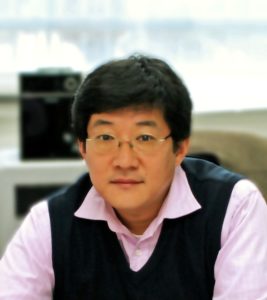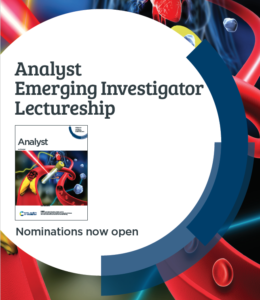SciX 2019, a conference featuring cutting edge developments in analytical sciences, instrumentation and unique applications, was held in Palm Springs, California, USA from October 13-18, 2019.
Royal Society of Chemistry Award-Winning Scientists
The RSC Theophilus Redwood award is given for interdisciplinary work at the interface of analytical, biological, and materials chemistry and skills for passionately and effectively communicating science to broad audiences. The 2018 award winner was Christy Haynes, University of Minnesota, USA.
Christy Haynes is the Elmore H. Northey Professor of Chemistry at the University of Minnesota where she leads the Haynes Research Group, a lab dedicated to applying analytical and nanomaterials chemistry in the context of biomedicine, ecology, and toxicology.
Christy was given her award by Professor Duncan Graham, President of the RSC Analytical Division and Analyst Editor-in-Chief and she gave a stimulating lecture on Polymer-enabled plasmonic sensing. Her lecture was followed by an award symposium with a lineup of speakers selected by Christy.
Congratulations Christy!
 |
| Christy Haynes presents her RSC Theophilus Redwood 2018 Award Lecture Photo credits: Glen P. Jackson, WVU, USA |
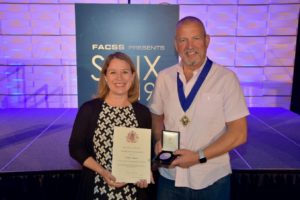 |
| The RSC Analytical Division President and Analyst Editor-in-Chief Duncan Graham presents Christy Haynes with the Theophilus Redwood 2018 award at SciX 2019
Photo credits: Glen P. Jackson, WVU, USA |
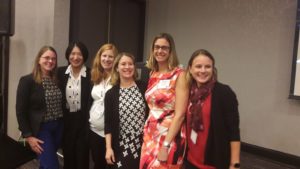 |
|
Christy Haynes and Symposium speakers (left to right): Melissa Maurer-Jones, Autumn (Tian) Qiu, Vivian Ferry, Christy Haynes, Julie Biteen and Korin Wheeler Photo: Maria Southall, RSC |
It also gives us great pleasure to announce that Analyst Advisory Board member Karen Faulds and Analytical Methods Associate Editor Chris Easley both received awards at SciX 2019.
Professor Karen Faulds was the recipient of the Charles Mann Award for Raman Spectroscopy. After receiving her award, Karen gave a plenary lecture on “Development of SERS and SESORRS for Multiplexed Bioanalysis”.
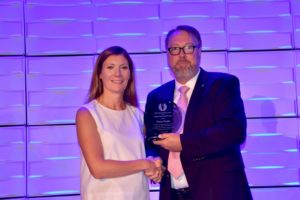 |
|
Analyst Advisory Board member Karen Faulds (L) is presented with the Charles Mann award. Photo credits: Glen P. Jackson, WV, USA |
Professor Chris Easley was the recipient of the AES Mid-Career Award. After being presented with his award, Chris delivered a plenary lecture titled “Digitizing Endocrine Tissue Secretions into Nanoliter Droplets for Analysis of Hormones and Metabolites at High Temporal Resolution”.
 |
|
Analytical Methods Associate Editor Chris Easley (L) receives the AES Mid-Career Award from AES President Rodrigo Martinez-Duarte. Photo credits: Glen P. Jackson, WV, USA |
We are extremely proud of Karen and Chris. Congratulations on well-deserved awards!
A dinner to celebrate the awardees and the RSC symposium speakers was hosted by the Analyst and Analytical Methods Deputy Editor Maria Southall and RSC Analytical Division President and Analyst Editor-in-Chief Duncan Graham, an opportunity to interact with the Analyst and Analytical Methods Board members attending the conference.
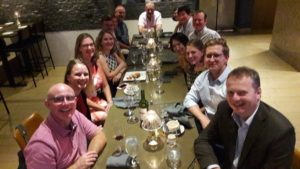 |
| Award winners, symposium speakers and Analyst and Analytical Methods Board members. |
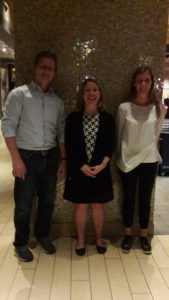 |
|
Award winners (L to R): Chris Easley, Christy Haynes and Karen Faulds. |











